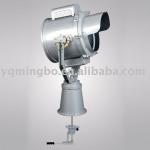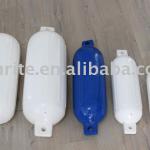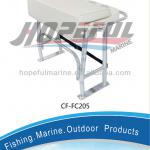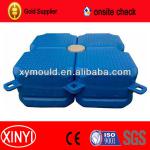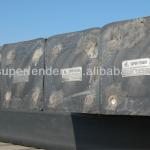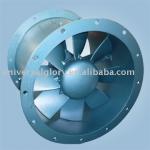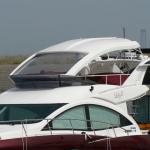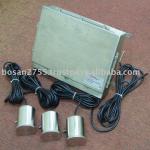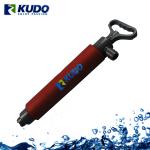3/4 Strands Pp/Pe Rope - multi-size
| Place of Origin: Guangdong China (Mainland) | Brand Name: hkrope | Model Number: multi-size | Part: Other |
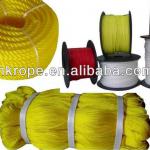
why choose us :1 most professional manufacturer of rope,webbing
2 excelsior industry requirements and quality detection
3 excellent reputation guarantee
4 can offer you excellent products in good quality and reasonable price
If you are interested in our products,please contact us as soon as possible
We can make custom sample within 7 days,the first sample order need charge fee.you also need pay the express charge. We attach great importance to the delivery time,any orders will be finished in time as we negociated.
Competitive advantages:
Good communication.
Prompt reply and response.
100% manufacture.
Eco-friendly
Reasonable price
Satisfactory pre-sale service&after-sale services
Samples:
1.sample order acceptable.
2.We can make the sample as your original or your idea and picture. Sample lead time :within 11 days
Payment terms:
1. We accept T/T, Western Union, L/C
2. Payment terms: 30% to 50% deposit , the balance before shipment .
Delivery:
1. Delivery time : 15days-30 days after receiving the deposit .
2. way: by sea,by airport, DHL, FEDEX, UPS,TNT,EMS.
Others:
Pls kindly advise us the details of size,quantity,material,colors and so on. You can also call us for any questions.
How to select aNew Dock Line?
Dock Lines
The following article addresses both the type and diameter of dock lines to be used as well as detailing proper dock line distribution.
Dock Line Minimum Diameter
The size (diameter) of your line depends on the size and weight of your boat. The following is the minimum requirement of the new policy:
| Line Diameter | ||
Boats under 20 feet | = | 3/8" |
Boats 20 to 30 feet | = | 1/2" |
Boats 30 to 40 feet | = | 5/8" |
Boats 40 to 60 feet | = | 3/4" |
Boats over 60 feet | = | 1" |
If your boat is heavy for its size, go up one size in diameter. A boat cannot be damaged by having its dock lines a bit oversized.
Dock Line Material
Nylon is the accepted best choice for dock lines. Nylon line comes in two types: 3 strand twisted, also called "laid" line, and braided line. Either is acceptable given the proper diameter is used as per the preceding table. 3 strand line is fine for most boating purposes, as it is strong and stretches to help absorb shock. It does, however, have the disadvantages of kinking easily and being rough on the hands. Braided line rarely kinks and is much easier on the hands. Its disadvantages are that it tends to chafe more easily than twisted line and it's more expensive.
Polypropyleneline (called "poly") is a very poor choice for dock lines…save it for your heaving and trip lines. Poly does not stretch, it has a very low breaking strength and degrades quickly in direct sunlight.
To illustrate this, here are some respective breaking strengths:
| Diameter | Nylon | Poly |
(Lbs. breaking strength) | (Lbs. breaking strength) | |
| 3/8" | 4,000 | 2,100 |
1/2" | 7,000 | 3,900 |
5/8" | 11,000 | 6,000 |
3/4" | 15,000 | 8,000 |
Aside: For finding safe working loads for any lines, it is best to size based on 20% of the breaking strength. For example, the working load of 3/8" nylon line:4000/5=800 lbs.
Also, a word about knots in your dock lines: a knot will reduce a line's breaking strength by as much as 50%! So avoid them as much as possible. The only knots a dock line should encounter are those that you tie around cleats or pilings. The use of pre-spliced eyes is recommended if you are unsure how to secure a line to a deck cleat. The use of proper knots is a mark of good seamanship…if you are unsure as to what knots you should be using, have a look around at other boats or ask the dockmaster.
CHAFE AND PROTECTION FROM WEATHERING
Almost all dock line failures occur at points of physical damage on the line…damage incurred either through constant chafing or weathering. Good dock lines are expensive (but so are hull repairs) so wherever your dock line goes through a chock or other hardware, or any place where the line is in contact with any surface, use a chafing guard to protect it. Chafing guards can be purchased or you can fashion your own out of an old piece of garden hose. Surfaces under your lines can be “softened” using carpet remnants. Make a point of inspecting your lines for chafing and excessive weathering periodically throughout the season and replace damaged lines. Shortening a line by using a sheepshank or other knot to isolate a worn area is not an acceptable remedy.
Line Distribution
A well secured boat will have at least four and preferably six dock lines: 2 bow lines, 2 stern lines and 2 spring lines.
As a general rule, the length of bow and stern lines should equal two-thirds of your boat's overall length. Spring lines should be slightly longer, approximately the same length as your boat. Spring lines keep the boat snugly near the dock by preventing it from moving fore or aft, while allowing for the rise and fall of the tide. Keep in mind; the position of cleats on your boat and dock may affect the length of the dockline. Unless your boat is unusually heavy or will be subjected to severe conditions, a bow line, stern line, and two spring lines are recommended. If your permanent slip has outboard pilings or a moor as well, you will need an additional bow and/or stern line.
The following diagrams show some examples of properly secured boats:
In times of forecasted storms, reset your dock lines and double them up! And while you’re at it, consider doubling up your neighbor’s lines as well...it will protect both of you. Also, please consider keeping a spare line readily accessible onboard for those times when you cannot make it down and your neighbor or the dockmaster needs to double your lines…having a spare line handy greatly increases the chances that someone will secure your boat for you!
The dockmaster will periodically review the docklines employed on our docks and those members found to be employing improper docklines will be notified immediately and will be required to employ proper docklines. Very poor lines may be replaced at the dockmaster’s discretion. The use of improper or unsuitable docklines is dangerous to both yours and other’s boats so be safe and courteous and use the required docklines!
Remember, good dock lines and good fenders are your first line of defense against hull damage. Use the nylon line that's correctly sized for your boat's length and weight, secure it properly and guard against chafe.
| Packaging Detail:Plastic bags, Plastic reel, Bundle bagging, Bliste,etc. |
| Delivery Detail:20 working days normally,depends on your quantity |



